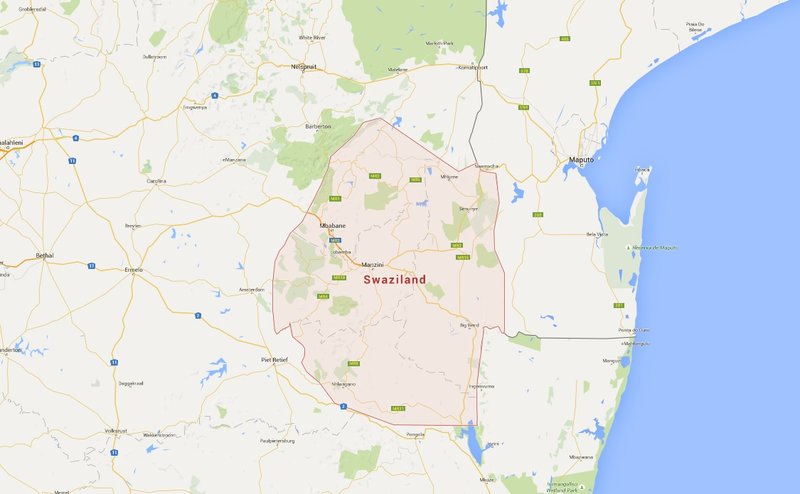Swazi port proposal is no hoax: Minister
Updated | By ANA
Officials have set the record straight about plans for a R30 billion inland port and a canal linking it to the sea which would rival those in Panama and Suez.

The project is not a hoax said Minister of Commerce, Industry, and Trade Gideon Dlamini at the weekend. Admitting that the canal would be three times longer than originally announced, the minister also said the undertaking was not to be a private project, as was also first believed, but would be done in partnership with the government of the landlocked country.
“Sceptics always look at the world through dirty glasses,” Dlamini told the Swazi Observer newspaper on Sunday. The newspaper is owned by the royal conglomerate Tibiyo TakaNgwane.
Correcting initial reports, Dlamini said the Swaziland port is to be located not 26km from the Indian Ocean but 70km inland. He said the facility would outshine the large and long-established port of Maputo, which is located only 50km or less from any possible Swazi canal which would open to the sea. The Swazi port would also put to shame the busy port of Durban, the government believes.
“The problem with the Maputo and Durban ports is their shallowness. These two ports are not deep enough to handle heavy ships and we have received reports that there are ships that face difficulty docking in these ports because they are not deep enough,” he said.
“The proposal for our seaport shows that it will be very deep and this would enable bigger ships that cannot dock in both Maputo and Durban to come here. The seaport that we will have will be of first world status and will have better facilities compared to Maputo and Durban. The deeper the seaport the better, and ours will be better than Maputo and Durban,” Dlamini said.
In March, the Maputo port’s management company Sociedade de Desenvolvimento do Porto de Maputo (MPDC) commenced a dredging operation to increase the port’s depth from 11 to 14 metres. Ships of 80,000 tonnes will be able to dock at Maputo. MPDC is targeting cargo movement of 40 million tonnes annually by 2020. MPDC is a private partnership between the Mozambique state port and rail company Portos e Caminhos de Ferro de Moçambique (CFM), Grindrod of South Africa, DP World of the United Arab Emirates, and Mozambique’s Gestores.
The port of Durban, Africa’s busiest shipping terminal and the Southern Hemisphere’s fourth largest container terminal, is 11.8 metres at its shallowest point. Development plans call for dredging to 15 metres to accommodate the world’s largest container ships. Behemoth cargo vessels and cruise ships already regularly call on Durban, which like Maputo, has for centuries been a fixture on the world’s sea lanes.
No known international investors or firms familiar with port and canal building and operations have been attached to the Swazi project, which has been proposed by two local businessmen. Government dismisses concerns about the port’s practicality and viability.
“Today we have mobile phones but people were sceptical when manufacturers announced the coming of this technology. Even with airplanes, people were sceptical about them, but they turned out to be a tremendous success,” Dlamini told the Swazi Observer. He did not say who was sceptical about cellphone or airplanes, or reveal where financing for the port and canal would originate.
The site selected for the port is centered in a protected conservation area that is home to two major game parks. Environmentalists say the area would be devastated by the intrusion of major industrial development. An enormous canal at least 15 metres deep to duplicate the depth planned for Durban would have to be built, mostly on Mozambique territory.
Mozambique’s government has not been officially notified about the project, even though two-thirds of the massive canal would be dug through Mozambique, somewhere south of Maputo. Commenting on the proposal, Agencia de Informacao de Mocambique described the project as unnecessary and technically more complicated than proposers have acknowledged.
“Canals are fine for transporting goods over flat terrain – but if there are hills in the way, locks must be built, dramatically increasing the costs. Building a canal with a system of locks capable of holding ocean-going vessels would be a massive engineering undertaking,” the agency noted.
To raise and lower ships from the ocean to the port, which will be 275 metres above sea level, more than a series of locks is required. A lake mid-route is needed to facilitate the process. An artificial lake, Gatun Lake, was excavated to enable the Panama Canal to operate.
A lake does exist in Mozambique that could theoretically be used, the Pequenos Libombos Lake west of Maputo. However, to connect with the lake the Swazi canal would have to be diverted northward rather than moving in a straight easterly direction to the sea. The canal would also have to cross the Mbuluzi River that feeds the Pequenos Libombos. The large river would have to be diverted across a section of southern Mozambique or made to flow underground beneath the canal.
Dlamini seemed unconcerned with these technical matters when he said, “The architects who presented the project to us demonstrated how this would be overcome and we were impressed. Surveys have been done and the steepness of the terrain will be dealt with.”
Show's Stories
-
Police officers surprise man for his 25th birthday
We get to see the positive side of police body cams in a wholesome video...
The Workzone with Elana Afrika-Bredenkamp a minute ago -
Watch: "I just don't want to be 46!"
When these kids remind us that they are old souls...
The Workzone with Elana Afrika-Bredenkamp 8 minutes ago